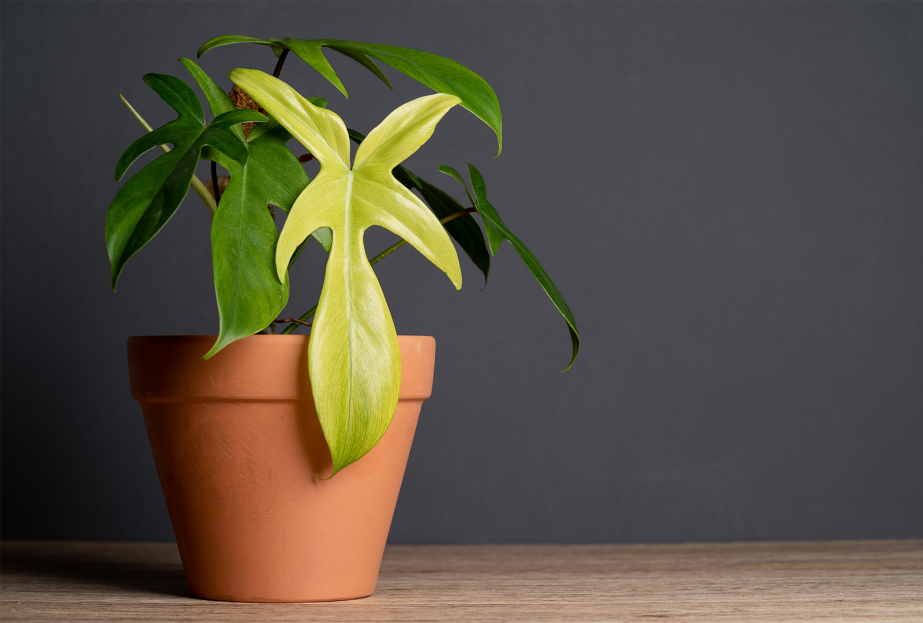
The Philodendron Florida Ghost is a striking tropical plant renowned for its unique, pale-colored leaves and fast-growing nature. With its pale, almost white leaves that mature into a beautiful green, the Florida Ghost adds a modern touch to any plant collection. This plant is relatively easy to care for, making it an excellent choice for plant enthusiasts of all experience levels. Whether you're a beginner or a seasoned plant parent, here’s a guide to keeping your Philodendron Florida Ghost happy and healthy.
The Philodendron Florida Ghost thrives in bright, indirect light. This plant can adapt to lower light conditions, but its growth may slow down, and the vibrant color of the leaves may diminish. To keep the plant looking its best and encourage healthy growth, place it in a location where it can get plenty of filtered light. A south or east-facing window is often ideal.
Avoid placing the plant in direct sunlight, as this can scorch the delicate leaves, leading to brown or crispy edges.
Philodendron Florida Ghost prefers to be kept in slightly moist soil. Water your plant when the top 1-2 inches of soil feel dry. During the growing season (spring and summer), you may need to water the plant more frequently, as it is actively growing. In the cooler months (fall and winter), reduce the watering frequency, as the plant’s growth slows down.
Be sure the pot has good drainage to prevent water from sitting at the bottom, as this can lead to root rot. It’s important not to let the plant sit in water, so empty any excess water from the saucer after watering.
Philodendron Florida Ghost prefers a well-draining, airy soil mix. A general houseplant mix combined with perlite or orchid bark works well to provide the aeration needed for healthy root growth. The plant’s roots dislike sitting in heavy, soggy soil, so ensure the mix drains easily.
Choose a pot with drainage holes to allow excess water to escape. Repot your plant every 1-2 years or when it outgrows its container. If you notice that the roots are beginning to grow through the drainage holes, it’s time for a larger pot.
This tropical beauty enjoys warm temperatures ranging between 65-85°F (18-29°C). Philodendron Florida Ghost is sensitive to cold, so avoid exposing it to temperatures below 50°F (10°C), as this can cause stress and damage to the plant.
Philodendron Florida Ghost thrives in moderate to high humidity. If your home has dry air, especially in winter, consider humidifying the room or placing the plant on a tray filled with pebbles and water. You can also mist the leaves occasionally to maintain humidity, but avoid over-wetting the foliage, as this can lead to fungal issues.
During the growing season (spring and summer), the Philodendron Florida Ghost benefits from regular feeding to encourage new growth and vibrant foliage. Use a balanced, liquid fertilizer diluted to half strength and apply it once a month.
Avoid fertilizing during the fall and winter, when the plant’s growth slows down. Over-fertilizing can lead to nutrient burn, so it’s important to follow the recommended dosing and frequency.
To keep your Philodendron Florida Ghost healthy and tidy, occasional pruning is recommended. Trim any dead or damaged leaves with sharp scissors to maintain a neat appearance. You can also cut back leggy growth or longer vines to encourage fuller growth.
The Florida Ghost is known for its aerial roots, which it uses to climb. If you’d like to keep the plant compact, you can cut the vines back and propagate the cuttings in water or soil to create new plants.
Philodendron Florida Ghost, like other Philodendrons, is toxic to pets if ingested. The plant contains calcium oxalate crystals, which can cause irritation to the mouth, throat, and stomach of pets if consumed. Keep this plant out of reach of pets, especially cats and dogs, to avoid potential poisoning.